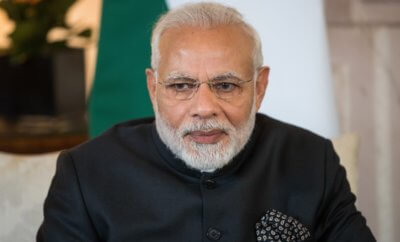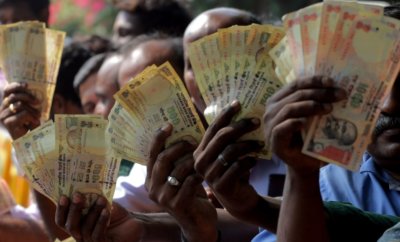Business
India Top Remittance Receiving Country in 2017: UN Report

Representational Image
Photo: Bigstock
Around 400 million people are directly affected by remittances in Asia-Pacific region, according to the report.
India received the highest remittance in the world in 2017, according to a report from the United Nations’ specialized agency, International Fund for Agricultural Development (IFAD). The report, released on May 7, stated that migrant workers sent $256 billion to their families in the Asia-Pacific region, with Indian receiving $69 billion in foreign remittances.
China followed India, receiving $64 billion in remittances, while Philippines got 33 billion, constituting the three largest remittance-receiving nations in the world, according to the report, titled “RemitSCOPE-Remittance markets and opportunities – Asia and the Pacific.” Pakistan ($20 billion) and Vietnam ($14 billion) also figured in the top 10.
About 70 per cent of remittances sent to Asia and the Pacific come from outside the region, in particular from the Gulf countries (32 per cent), North America (26 per cent) and Europe (12 per cent). In the Asia Pacific region, 400 million people, one out of every 10 people, are directly affected by remittances either as a sender or as a receiver, the report said.
The cost of sending money to the Asia Pacific region has decreased by only 0.67 percent since 2015, reaching 6.86 per cent in 2017. Lower transfer costs mean more money is available to families.
Cash-to-cash transactions remain by far the most common form of transfer, the report said, adding that it is only recently that technology is beginning to move markets towards account-to-account transfers through digital operations.
There are now more than one million payment locations through the Asia Pacific region, reflecting a greater digitization of transactions, as per the report.
”The promise of technological innovation in the remittance marketplace could bring about a fundamental transformation for hundreds of millions benefiting from these flows. But this transformative change has not yet happened,” Pedro De Vasconcelos, IFAD senior remittance expert, said in the report.
An estimated 40 per cent of the total value of remittances goes to rural areas across the world. Remittances in Asia and Pacific region, however, go disproportionately to countries with a majority rural population such as Sri Lanka (82 per cent), Nepal (81 per cent), India (67 per cent) and Vietnam (66 per cent).
Families generally spent about 70 per cent of remittances to meet basic needs, such as food, clothing, healthcare and education. The remaining 30 percent, amounting to $77 billion, could be saved and invested in asset-building or income-generating activities, helping families to build livelihoods and their future, De Vasconcelos added.
“If you give people the opportunity to invest, they will invest, but for that, access to financial services is key, and still too many families, in particular in rural areas, cannot save, borrow and invest money through proper financial services,” said De Vasconcelos.
India retained the top spot for the third time as the biggest recipient of expat remittances globally in 2017, with overseas Indians sending home $69 billion, the World Bank said earlier this year.



